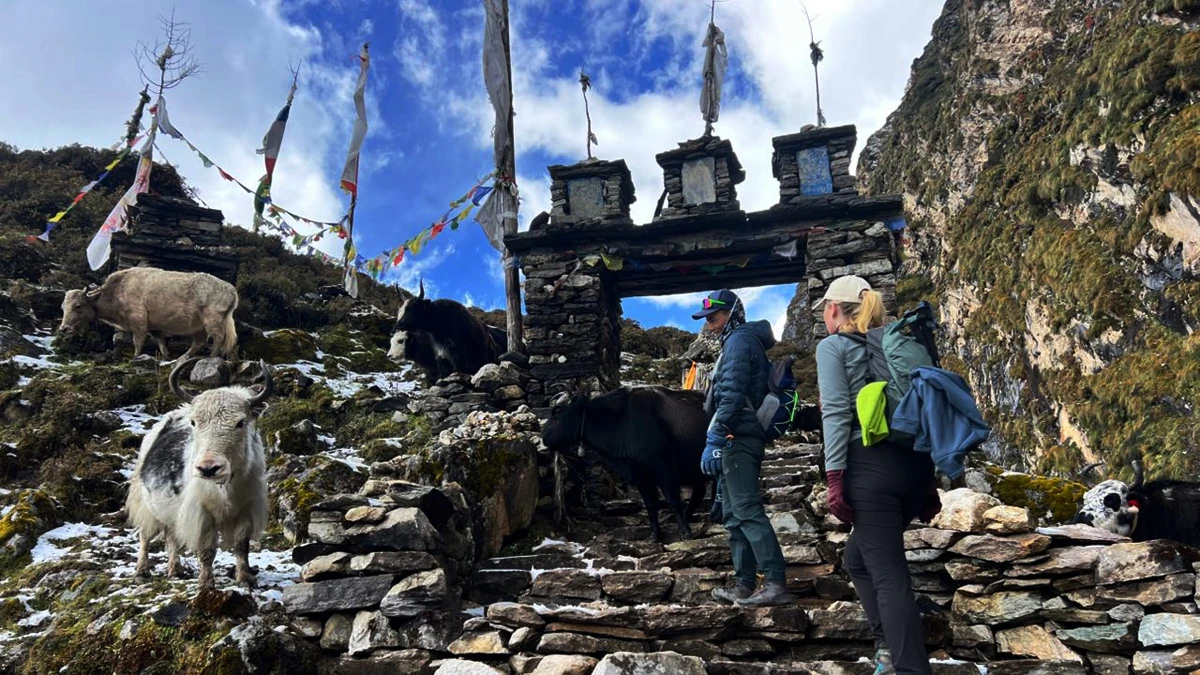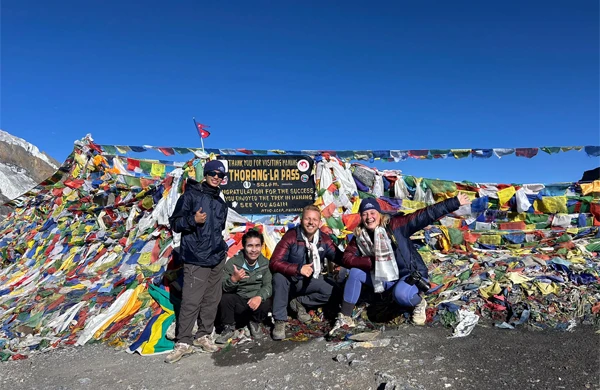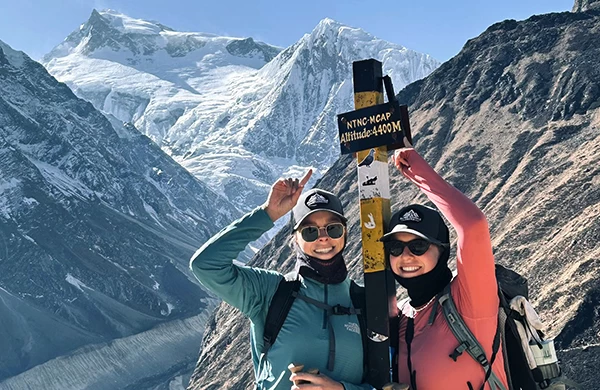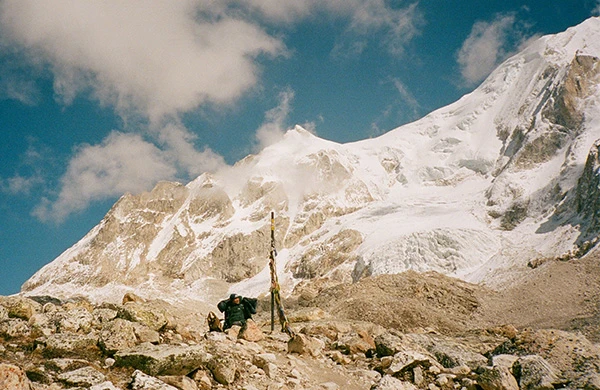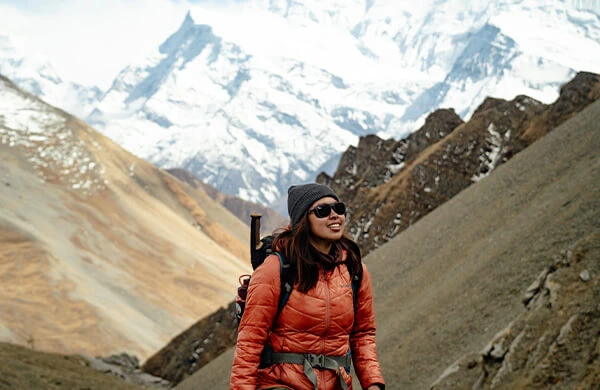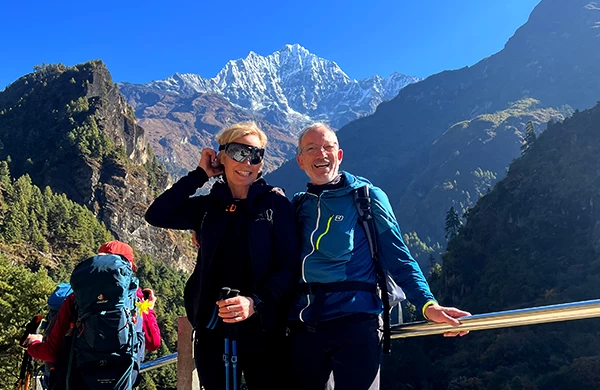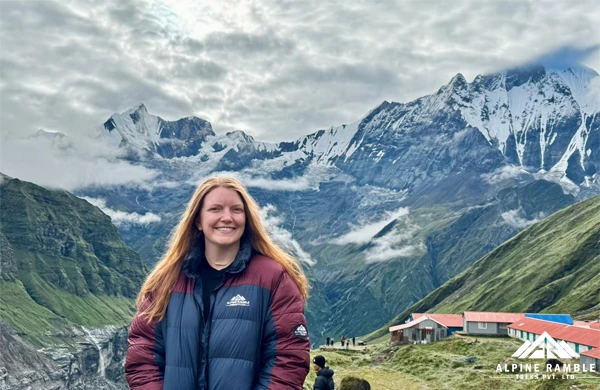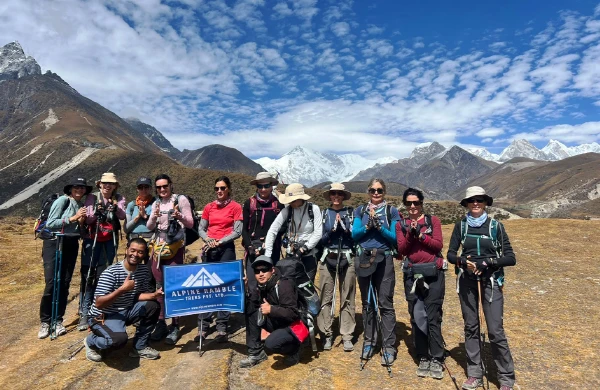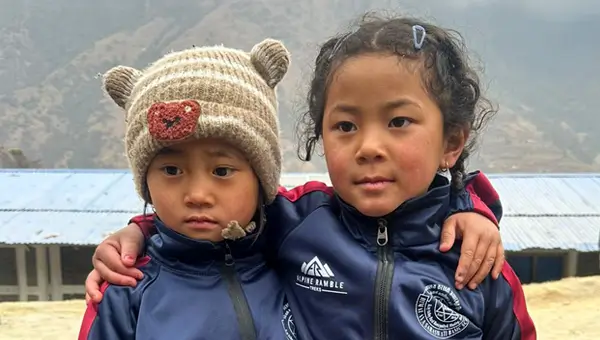The Manaslu Circuit Trek, Why its Nepal’s Hidden Gem
If Everest Base Camp is the celebrity of Himalayan trekking, the Manaslu Circuit is the cult classic, quieter, wilder, and more soulful. Tucked between the Annapurna and Ganesh Himal ranges, the trail traces ancient trade routes once used by Tibetan caravans.
While Everest and Annapurna attract thousands of trekkers each year, the Manaslu Circuit Trek Nepal still feels like stepping back in time, terraced fields, wooden bridges, and stone villages untouched by mass tourism.
Trekkers often describe it as a journey that begins in tropical Nepal and ends in the Arctic. You’ll start at lush green valleys like Soti Khola (700 m), pass waterfalls and rice paddies, and ascend all the way to the icy heights of Larkya La Pass (5,160 m), the trek’s dramatic climax.
Why the Manaslu Circuit Captures the Spirit of True Adventure
Unlike the commercialized Everest or Annapurna routes, Manaslu Circuit trekking is an immersion into isolation, a rare connection with the Himalayas and the people who call them home.
You’ll meet Gurung and Tibetan-descended villagers, monks spinning prayer wheels, and children racing down yak trails. Nights are spent in cozy teahouses with flickering fireplaces.
There’s a quiet dignity to this region, one that reminds trekkers of Patagonia’s Torres del Paine or Peru’s Inca Trail before the crowds arrived.
Understanding the Manaslu Circuit Trail: Distance, Altitude & Challenges
The Manaslu Circuit Trek map spans roughly 177 kilometers and typically takes 12–16 days to complete.
- Starting point: Soti Khola or Machha Khola (~700–900 m)
- Highest point: Larkya La Pass (5,160 m)
- Total elevation gain: Over 4,000 meters
The route transitions from subtropical valleys to alpine tundra. Days are long, 6 to 8 hours of hiking and the air thins as you climb. Altitude sickness, changing weather, and basic facilities make packing wisely essential.
Think of it as trekking from the jungles of Southeast Asia to the glaciers of Alaska, in just two weeks.
The Climate of Contrasts: What You’re Packing For
Temperatures on the Manaslu Circuit trek vary dramatically:
- Lower region (700–1,500 m): 10°C–25°C
- Mid region (1,500–3,000 m): 5°C–20°C
- High region (above 4,000 m): -5°C to -15°C at night
The weather can change in minutes, a sunny morning can turn into snow by afternoon. Packing for this trek isn’t about carrying more; it’s about carrying smart, layers, quality gear, and adaptability.
Mid Layer – The Heat Keeper
- Insulating yet breathable, your mid-layer regulates warmth.
- Fleece or softshell jackets
- Merino wool pullovers
- Lightweight synthetic insulators
Outer Layer – Your Shield
The Manaslu winds can cut like glass. Your shell must protect without suffocating you.
- Gore-Tex or equivalent waterproof jacket
- Windproof pants
- Waterproof gloves
Headwear & Accessories
- Warm beanie and sun hat
- Neck gaiter or buff
- UV-protected sunglasses
- Lightweight gloves and warm mittens
Footwear: The Foundation of Every Step
A trek is only as good as your boots. Poor footwear on the Manaslu Circuit Trek Nepal can ruin your journey.
Essentials:
- High-ankle, waterproof trekking boots (well broken-in)
- Warm, breathable hiking socks (3–4 pairs)
- Camp sandals for evenings
- Optional: crampons or microspikes (if trekking in winter)
Pro tip: Break in your boots before your flight, blisters at 4,000 meters are not a memory you want.
Gear & Equipment: Smart, Compact, Essential
Packing for Manaslu Circuit trekking is about weight distribution. Every gram counts at altitude.
Must-haves:
- Backpack: 40–60 L, with padded straps & rain cover
- Daypack: 25–30 L for water, snacks, camera, and documents
- Sleeping bag: Rated to -10°C or lower
- Trekking poles: For balance on rocky trails
- Headlamp: With spare batteries
- Dry bags: Protect electronics from sudden rain
- Map / GPS / Manaslu Circuit Trek Map app: Always carry an offline version
Health, Safety & Altitude Readiness
Altitude sickness is the invisible challenge of the Himalayas. The Manaslu Circuit Trek involves daily elevation gain, so acclimatization and preparation are key.
Essentials:
- First-aid kit with bandages, blister plasters, and painkillers
- Diamox or altitude medication (consult your doctor)
- Water purification tablets or filter
- Sunscreen (SPF 50+) and lip balm
- Compact travel insurance that covers helicopter evacuation up to 6,000m
Permits: The Legal Passport to the Manaslu Circuit
Since the Manaslu Circuit Trek passes through restricted zones near the Tibetan border, you’ll need three official permits:
- Manaslu Restricted Area Permit (RAP)
- Manaslu Conservation Area Permit (MCAP)
- Annapurna Conservation Area Permit (ACAP)
You must also trek with a licensed guide through a registered trekking agency, this ensures both safety and environmental protection.
What Makes the Manaslu Circuit Different from Other Treks
- Remoteness: Minimal crowds, pristine wilderness.
- Culture: Deep Tibetan influence; ancient monasteries and mani walls.
- Challenge: Fewer teahouses, basic infrastructure, but unmatched authenticity.
- Reward: Every view feels earned. Every interaction, genuine.
If Everest Base Camp is a pilgrimage, Manaslu is a discovery.
Renting & Buying Gear in Kathmandu
Kathmandu’s Thamel district is a paradise for trekkers, part marketplace, part museum of adventure. Rent or buy?
- Renting (down jackets, sleeping bags, poles) is ideal for one-time trekkers.
- Buying suits repeat adventurers, invest in lightweight, durable gear. Local shops offer affordable copies of major brands, decent for the trek, even if not expedition-grade.
Packing Tips from Manaslu’s Veteran Trekkers
- Pack light, layer smart: Don’t exceed 12–14 kg total.
- Store extras in Kathmandu: Most hotels offer free luggage storage.
- Hydrate constantly: Carry a refillable 1L+ bottle.
- Snacks matter: Energy bars and nuts go a long way in high altitudes.
- Keep electronics warm: Cold drains batteries fast, store near your body at night.
- Protect documents: Use waterproof sleeves for passports and permits.
Complete Manaslu Circuit Packing List (Quick Reference Table)
| Category |
Items |
| Base Layers |
Thermal tops/bottoms, moisture-wicking shirts |
| Mid Layers |
Fleece jacket, soft shell, merino pullover |
| Outer Layers |
Waterproof jacket, windproof pants, gloves |
| Footwear |
Trekking boots, socks, sandals |
| Accessories |
Hat, buff, sunglasses, trekking poles |
| Bags |
40–60 L backpack, 25–30 L daypack, dry bags |
| Sleeping Gear |
-10°C sleeping bag, liner, pillow (optional) |
| Health & Safety |
First-aid kit, Diamox, sunscreen, water filter |
| Documents |
Passport, RAP, MCAP, ACAP, insurance papers |
| Electronics |
Power bank, headlamp, camera, chargers |
| Snacks |
Trail mix, granola bars, chocolate |
| Extras |
Toiletries, wet wipes, sanitizer, journal |
Manaslu Circuit Trek Map & Navigation Insights
While most trekkers follow a guided route, it helps to familiarize yourself with the Manaslu Circuit Trek map beforehand.
The trail passes through key highlights like:
- Soti Khola → Machha Khola → Jagat → Deng → Namrung → Samagaon → Samdo → Dharamsala → Larkya La Pass → Bhimtang → Dharapani.
Each section offers a distinct landscape, from subtropical jungle to glacier moraine. Offline GPS apps like Maps.me or AllTrails can be a lifesaver in case of signal loss.
Packing Philosophy: Minimalism is Strength
Ask any seasoned trekker: you remember the views, not the things you carried. The Manaslu Circuit isn’t about luxury; it’s about liberation. Every item in your pack should earn its place.
When you cross Larkya La at 5,160 meters, the less you carry, the more you feel, the air, the silence, the triumph.
Final Thoughts, Manasluc Circuit - A Journey Few Dare, But None Forget
The Manaslu Circuit Trek Nepal is the Himalayas at their most authentic, no Wi-Fi distractions, no crowded trails, just pure, untamed beauty and human connection.
Packing right transforms this adventure from a challenge into a memory you’ll carry forever. From the warmth of a woolen cap in the cold wind to the hum of a monastery bell at dawn, every item tells a story.
And when you’re ready to experience this once-in-a-lifetime journey, Alpine Ramble Treks stands ready to guide you with local expertise, trusted logistics, and heart. Because on the Manaslu Circuit, preparation isn’t just practical, it’s spiritual.
FAQs About the Manaslu Circuit Trek Nepal
How long does the Manaslu Circuit Trek take?
The Manaslu Circuit Trek usually takes 12 to 16 days, depending on your pace, acclimatization days, and the chosen route. Some itineraries add extra nights in Samagaon or Samdo for acclimatization, a smart move for altitude safety. If combined with the Tsum Valley extension, the trek can stretch to about 20 days.
The trail covers roughly 177 kilometers in total, circling Mount Manaslu (8,163 m), the eighth-highest peak in the world. While physically demanding, the pace is gradual, designed to help your body adjust to altitude while enjoying the remarkable diversity, from tropical forests to alpine passes.
What is the best time to trek the Manaslu Circuit?
The best time to trek the Manaslu Circuit is autumn (September–November) and spring (March–May). During autumn, skies are crisp and clear, revealing panoramic Himalayan views. Spring brings wildflowers, rhododendrons, and warmer weather. Winter (December–February) offers solitude but frigid temperatures, while the monsoon season (June–August) brings leeches, landslides, and poor visibility.
If you want the perfect balance of scenery, safety, and cultural vibrancy, October and April are the golden months for the Manaslu Circuit Trek Nepal, moderate temperatures, fewer crowds, and vibrant mountain landscapes.
How difficult is the Manaslu Circuit Trek for beginners?
The Manaslu Circuit Trek is considered moderate to challenging, making it achievable for beginners with solid fitness and preparation. The biggest challenges are altitude (up to 5,160 m at Larkya La Pass), long trekking days, and remote conditions. Unlike the Annapurna or Everest routes, facilities here are basic, so trekkers must adapt to simplicity.
If you’ve done multi-day hikes before and train with cardio, stair climbs, and endurance walks for at least two months prior, it’s absolutely doable. Beginners often find this trek rewarding precisely because it demands both resilience and curiosity, two hallmarks of true adventure.
How should I train for the Manaslu Circuit Trek?
Training for the Manaslu Circuit Trek involves building endurance, strength, and stamina. Focus on aerobic exercises like hiking, running, swimming, or cycling for at least 4–5 sessions per week. Include leg strengthening through squats, lunges, and step-ups to simulate trekking conditions. Practice carrying a weighted backpack to get used to the load.
Try to hike on real trails with elevation gain, stair climbing helps replicate uphill trekking. Training should begin 8–10 weeks before departure. The fitter you are, the more you’ll enjoy the journey, from the lush valleys to the windswept passes of the Manaslu Circuit.
What permits are required for the Manaslu Circuit Trek?
Trekkers need three key permits:
- Manaslu Restricted Area Permit (RAP) – for the restricted zone between Jagat and Samagaon.
- Manaslu Conservation Area Permit (MCAP) – for conservation management.
- Annapurna Conservation Area Permit (ACAP) – since the trail exits through Annapurna.You must trek with a registered guide and at least two trekkers are required for the RAP. Agencies like Alpine Ramble handle all permits for you. Carry printed copies throughout your journey, there are several checkpoints where they’ll be verified.
Can I do the Manaslu Circuit Trek solo?
No, solo trekking is not allowed on the Manaslu Circuit because it lies in a restricted area near the Tibetan border. The Nepal government mandates a licensed guide and at least two trekkers to obtain the Manaslu Restricted Area Permit. However, if you’re traveling alone, agencies can easily pair you with another trekker.
Trekking with a guide ensures your safety, helps you connect with local culture, and enriches your experience through local knowledge, without losing the spirit of solo adventure.
What makes the Manaslu Circuit different from the Annapurna or Everest treks?
The Manaslu Circuit is often called the “Annapurna of twenty years ago.” It’s quieter, less commercialized, and feels more authentic. While Everest offers iconic landmarks and Annapurna offers comfort, Manaslu delivers raw beauty, solitude, and culture. Expect more unpaved trails, basic teahouses, and genuine encounters with villagers.
It’s also geographically unique, you’ll walk around Manaslu, the world’s eighth-highest peak, crossing Larkya La Pass (5,160 m) with expansive Himalayan views rarely seen elsewhere. For trekkers seeking wilderness without crowds, this circuit is pure gold.
How much does the Manaslu Circuit Trek cost?
The cost varies depending on duration, season, and agency, but typically ranges from USD 1,200 to 1,800 per person for a full package, including permits, accommodation, guide, porter, and meals. Independent arrangements may lower costs slightly, but you’ll lose convenience and safety coverage.
Food and lodging in remote areas get pricier at altitude, expect USD 5–10 per meal at higher villages. Trekking insurance, equipment, and tips add extra. Overall, the Manaslu Circuit Trek Nepal offers exceptional value for an adventure of this scale.
What kind of accommodation is available on the Manaslu Circuit?
Accommodation consists mainly of teahouses, family-run lodges with twin rooms and shared bathrooms. Rooms are simple: wooden beds, blankets, and a bulb powered by solar energy. Higher up, facilities become basic and electricity scarcer.
Heating is usually via a yak-dung stove in the dining area. Bring your own sleeping bag for extra warmth. While teahouses may not offer luxury, they’re rich in hospitality, hot tea, home-cooked dal bhat, and stories from the hosts who’ve welcomed trekkers for generations.
What kind of food is served during the trek?
Expect hearty, energy-rich meals. The staple is dal bhat, rice, lentil soup, and vegetables, all-you-can-eat and perfect for trekkers. You’ll also find noodles, soups, Tibetan bread, fried rice, and momos (dumplings). Breakfast often includes porridge, eggs, and tea or coffee. Meat is available in lower regions but avoided at higher altitudes for freshness reasons.
Carry protein snacks like nuts or energy bars. The food on the Manaslu Circuit Trek may be simple, but it fuels both body and spirit.
How cold does it get at Larkya La Pass?
At Larkya La Pass (5,160 m), temperatures can drop to -10°C to -20°C (14°F to -4°F) during mornings and nights, especially from November to February. Wind chill makes it feel even colder. Daytime can be pleasant if sunny, but weather changes fast.
Proper layering, thermals, fleece, and a down jacket, is crucial. Many trekkers start crossing the pass before dawn when it’s freezing but safer before afternoon winds rise.
The cold feels sharp, but the view, a horizon of silver peaks, makes every step worth it.
What is the altitude sickness risk on the Manaslu Circuit?
Altitude sickness (AMS) can occur above 2,500 meters and becomes a real risk after 3,500 meters. Symptoms include headache, nausea, dizziness, and fatigue. The key is gradual ascent and hydration. Spend extra nights at Samagaon (3,530 m) or Samdo (3,875 m) for acclimatization.
Avoid alcohol, walk slowly, and eat well. If symptoms worsen, descend immediately. Guides carry oxygen meters and know when to act. With proper acclimatization, most trekkers complete the Manaslu Circuit safely without serious issues.
Do I need travel insurance for this trek?
Yes, travel insurance is mandatory for the Manaslu Circuit Trek Nepal. It must cover medical emergencies and helicopter evacuation up to 6,000 meters. The terrain is remote, and rescue options are costly without coverage.
Reputable insurers like World Nomads, SafetyWing, or Global Rescue offer trek-specific policies. Carry both digital and printed copies of your insurance, checkpoints or agencies may verify it before issuing permits.
Is there Wi-Fi or mobile network on the Manaslu Circuit?
Connectivity is limited. In lower villages like Soti Khola and Jagat, mobile signal and Wi-Fi are accessible, though slow. Higher up (Namrung, Samagaon, Samdo), networks fade, and Wi-Fi, if available, costs extra and is unreliable. Power sources are solar and can fluctuate. Many trekkers embrace the digital detox, swapping notifications for mountain silence.
Bring power banks or solar chargers. Offline maps and eBooks are great company when the Himalayas disconnect you beautifully from the modern world.
How are toilets and hygiene on the trek?
Facilities are basic but improving. Lower villages may have flush toilets, while higher ones often have squat toilets with cold water or buckets. Always carry toilet paper, hand sanitizer, and wet wipes, as teahouses rarely provide them.
A small quick-dry towel and biodegradable soap are useful. Showers are available in most places but may cost USD 2–5, and hot water often comes from solar tanks. Staying clean is about adaptation, a mix of minimalism, respect, and patience in the high Himalayas.
What currency should I carry on the Manaslu Circuit?
Cash is king. After Soti Khola, there are no ATMs, so withdraw enough Nepali Rupees (NPR) in Kathmandu. Budget roughly USD 20–25 per day for meals, snacks, and minor expenses, in addition to your package cost. Higher up, prices increase due to transport costs.
Carry small denominations (100, 500, 1000 NPR), teahouses often struggle to make change. Keep your cash in waterproof zip bags inside your daypack.
How are porters and guides arranged for the Manaslu Circuit?
Government rules require trekkers to hire a licensed guide for the Manaslu Circuit. Most agencies arrange both guides and porters. Porters typically carry 20–25 kg for two trekkers.
Treat them fairly, pack responsibly, ensure good equipment, and offer tips (USD 100–150 per trek). Guides are invaluable: they manage permits, language barriers, and safety. Many have grown up along the trail and share stories that turn a great trek into an unforgettable one.
What happens in case of an emergency on the trek?
In emergencies, guides contact rescue agencies through satellite phones or local networks. Helicopter evacuation is the fastest option for severe altitude sickness or injuries, covered by insurance. First-aid is provided on-site, and nearby teahouses often help coordinate assistance. Remote areas like Dharamsala may delay response due to weather.
Always share your insurance details with your guide beforehand and carry emergency numbers. Preparation ensures peace of mind, even when far from everything familiar.
Is drinking water safe along the Manaslu Circuit?
Tap or river water isn’t safe for drinking. Trekkers must use water purification tablets, filters, or UV purifiers. Bottled water is available but discouraged to reduce plastic waste, especially in conservation zones. Boiled water from teahouses is reliable and affordable (USD 1–2 per liter). Staying hydrated is vital at altitude, aim for 3–4 liters per day.
Carry a reusable metal or BPA-free water bottle and refill regularly. The fewer bottles you buy, the cleaner the Himalayas remain.
Can I charge my devices during the trek?
Yes, but access varies. Most teahouses provide charging facilities for a small fee (USD 2–4 per device). Higher up, solar power replaces electricity, so it’s limited. Carry power banks (10,000–20,000 mAh) or solar chargers for reliability.
Switch devices to airplane mode, dim screens, and use power-saving options. If you’re bringing a camera, keep batteries close to your body to prevent freezing. Energy management is part of the adventure, plan ahead.
What’s the cultural experience like on the Manaslu Circuit?
The Manaslu Region blends Nepali and Tibetan cultures beautifully. Villages like Lho and Samagaon feature Buddhist monasteries, prayer flags, and spinning wheels. Locals greet you with a warm “Tashi Delek.” Festivals like Lhosar (Tibetan New Year) bring music and color to the mountains.
Trekkers often share tea with families, learning how Buddhism shapes daily life here. Respect is key: walk clockwise around stupas, ask before photos, and dress modestly. This cultural exchange is what makes Manaslu unforgettable.
What wildlife might I encounter on the trek?
The Manaslu Conservation Area protects diverse wildlife. You might spot blue sheep, Himalayan tahr, musk deer, or even elusive snow leopards (rare but possible around Samagaon).
Bird lovers will enjoy sightings of Himalayan monal (Nepal’s national bird) and griffon vultures. Always keep distance and never feed wildlife. Trekking here isn’t just a journey through peaks, it’s a walk through one of Asia’s richest mountain ecosystems.
Can I combine the Manaslu Circuit with the Tsum Valley Trek?
Yes, and it’s a fantastic choice. Adding Tsum Valley, a hidden Buddhist sanctuary north of the main trail, extends your trek by about 5–7 days. You’ll explore remote monasteries, meditation caves, and ancient villages untouched by modernity. Known as “The Valley of Happiness,” Tsum offers pure cultural immersion. Combining it with the Manaslu Circuit creates one of the most rewarding Himalayan experiences; part spiritual, part physical, entirely unforgettable.
What kind of insurance or evacuation support is available locally?
Rescue operations are coordinated between trekking agencies, insurance providers, and local helicopter companies. Once your guide confirms a serious condition, they contact the insurer’s emergency line for approval. Evacuations typically take a few hours, depending on weather. Major rescue operators like Simrik Air and Air Dynasty are active in this region. Always verify your insurer supports helicopter rescue in Nepal, not all global policies do. This single detail can be life-saving.
Can I do the Manaslu Circuit in winter?
Yes, but only if you’re well-prepared and experienced. Winter (December–February) offers crystal-clear skies and solitude, but extreme cold and snow at Larkya La Pass can block the route. Days are shorter, teahouses fewer, and temperatures can plunge below -20°C. With proper gear; insulated boots, down jacket, crampons, it’s a magical, quiet experience. However, always check conditions with your guide; sometimes safety means turning back. The mountains will still be there tomorrow.
Are there age restrictions for the Manaslu Circuit Trek?
There’s no official age limit, but trekkers should be physically fit and mentally resilient. Families with teenagers often trek successfully, while older adventurers (50s–70s) complete it with proper pacing and acclimatization. The key is preparation and attitude. Medical clearance is recommended if you have heart, lung, or blood pressure conditions. Manaslu rewards maturity and patience, age is secondary to spirit and preparation.
How sustainable is trekking in the Manaslu region?
Sustainability here depends on trekkers’ choices. The Manaslu Conservation Area promotes eco-friendly tourism: controlled access, waste management, and limited infrastructure. You can help by carrying reusable bottles, avoiding plastic, and respecting local customs. Hiring local guides and porters supports the community directly. Every mindful step keeps this fragile ecosystem thriving, so future travelers can experience the same untouched wonder you do.
What emergency medications should I carry?
Beyond regular first aid, pack Diamox (for altitude), ibuprofen or paracetamol (for pain), antibiotics for stomach infections (consult doctor), rehydration salts, and anti-allergy meds. Also bring band-aids, moleskin, and antiseptic cream. Don’t forget personal prescriptions and keep them in a waterproof pouch. While guides carry basic kits, personal medical readiness is vital in the remote Manaslu Circuit Trek Nepal, where clinics are scarce.
Can I see Mount Manaslu from the trail?
Absolutely, and it’s breathtaking. From villages like Lho, Samagaon, and Samdo, Mount Manaslu (8,163 m) dominates the skyline. The view from Larkya La Pass is unmatched, a 360° panorama including Himlung Himal, Cheo Himal, and Annapurna II.
Clear mornings offer postcard-worthy shots. It’s one of the few treks where you walk around a Himalayan giant, witnessing it from multiple angles. Bring a camera, but no photo captures the awe you’ll feel standing there.
Why should I choose the Manaslu Circuit over other treks in Nepal?
Because it’s Nepal’s best-kept secret, challenging, cultural, and deeply rewarding. The Manaslu Circuit combines everything trekkers seek: raw wilderness, authentic communities, and life-changing altitude landscapes. It’s less crowded than Everest, more adventurous than Annapurna, and more spiritual than Langtang.
Every bend brings a new world, waterfalls, prayer walls, glaciers. If you crave solitude and self-discovery, this is your trail. It’s not just a trek; it’s a return to what adventure truly means.

